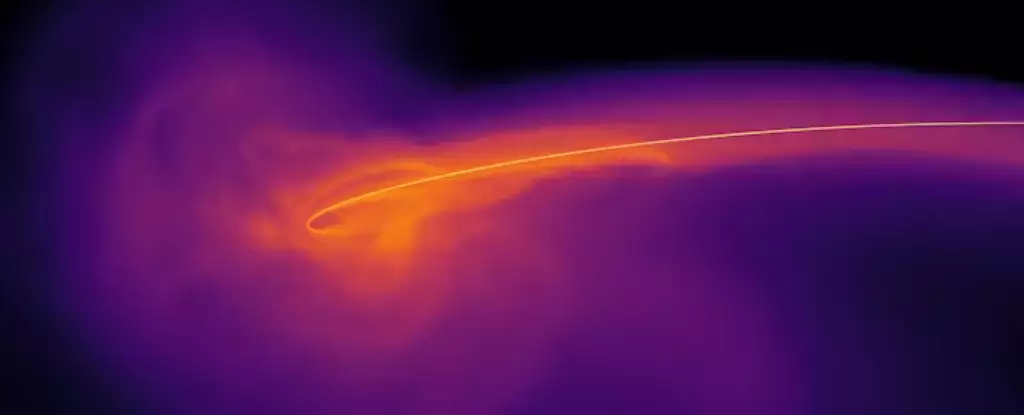The study of tidal disruption events caused by giant black holes in the centers of galaxies has been a fascinating topic in the field of astronomy. The theoretical predictions made by renowned astronomers such as Jack G. Hills and Martin Rees in the 1970s and 80s have provided a framework for understanding these complex processes. The idea that stars could be spaghettified and torn to shreds as they plunge towards a supermassive black hole sounds like a scene from a science fiction movie. However, the reality is even more intriguing.
One of the main challenges in studying tidal disruption events is the difficulty in simulating them using computer models. The extreme gravitational forces near a supermassive black hole require the incorporation of Einstein’s general theory of relativity, which adds a layer of complexity to the simulations. The recent development of a new simulation method by David Liptai has enabled researchers to explore these events in unprecedented detail. By throwing unsuspecting stars towards black holes and following the process from the initial plunge to the eventual outcome, scientists have been able to unravel some of the mysteries surrounding these cosmic phenomena.
The most recent simulations produced by the research team shed light on the behavior of material that is not swallowed by the black hole during a tidal disruption event. Instead of being consumed entirely, the material generates an extremely powerful and nearly spherical outflow due to the immense heat produced. This outflow, akin to a cosmic “burp”, plays a crucial role in shaping the observable characteristics of these events. The expansion of material at speeds close to that of light, powered by the black hole at the center, provides a compelling explanation for the strange glow observed in these events.
The findings from the simulations challenge previous assumptions about the behavior of material surrounding black holes during tidal disruption events. The idea that a significant amount of material would be blown away from the black hole, rather than being consumed entirely, has significant implications for our understanding of these cosmic phenomena. The existence of a “smothering” effect, where the central engine of the black hole is overwhelmed by material, sheds new light on the observed behaviors of tidal disruption events. The concept of a “black hole sun”, where a massive black hole powers the expansion of material akin to a sun, opens up new avenues for exploration in astrophysics.
The detailed simulations of tidal disruption events offer a new perspective on the behavior of giant black holes in the centers of galaxies. The intricate interplay between gravitational forces, heat generation, and material outflows has revealed a complex and fascinating phenomenon that challenges our preconceived notions of these cosmic events. As technology continues to advance and our understanding of black hole dynamics improves, the mysteries surrounding tidal disruption events are sure to unravel further, opening up new possibilities for exploration and discovery in the field of astronomy.


Leave a Reply